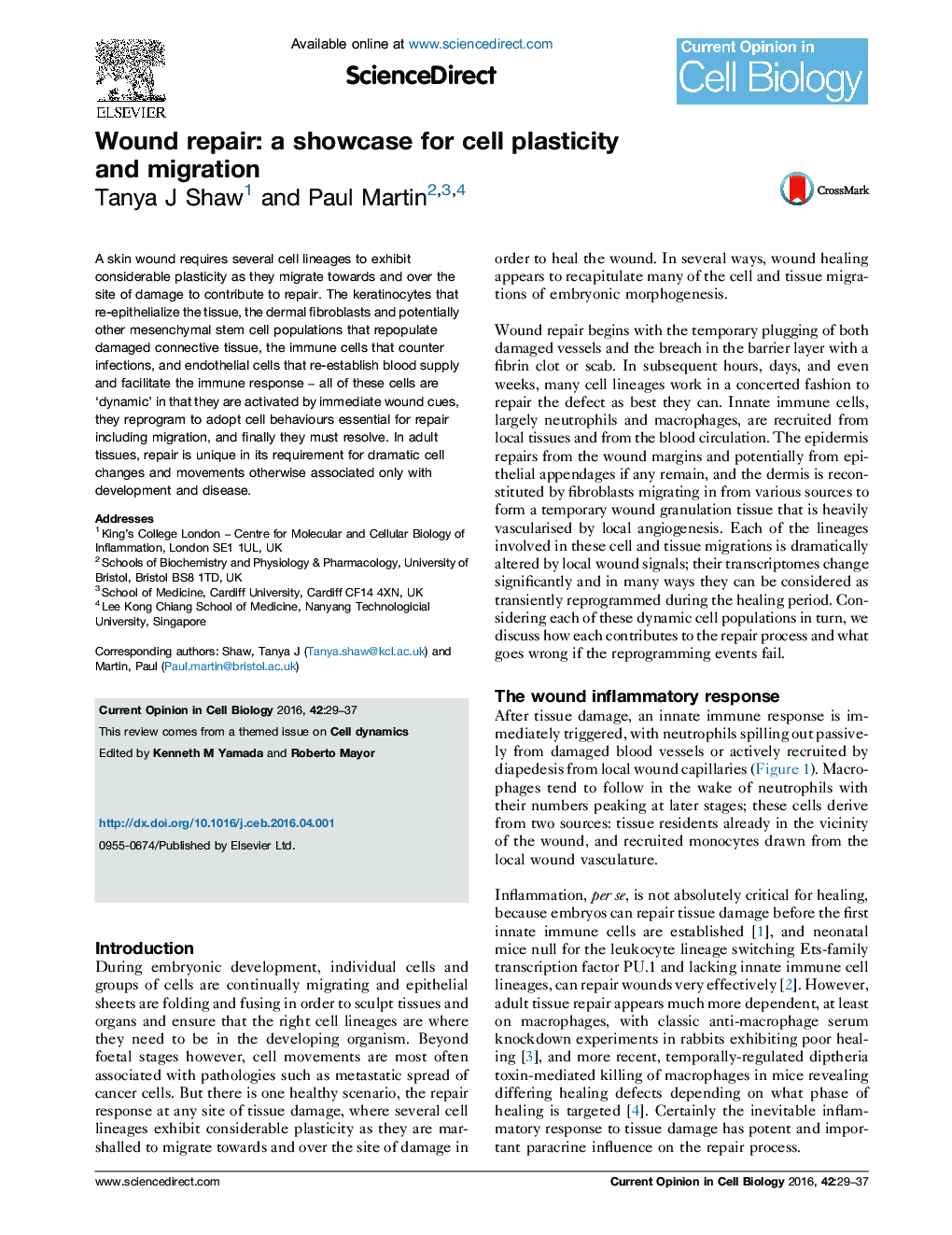| Article ID | Journal | Published Year | Pages | File Type |
|---|---|---|---|---|
| 2169687 | Current Opinion in Cell Biology | 2016 | 9 Pages |
•Multiple cell lineages reprogram and migrate in order to heal a wound.•In general, wound healing cell behaviours appear to recapitulate development.•Inflammation evolves over repair time-course, promoting repair, angiogenesis and scarring.•Re-epithelialisation involves active participation by follower and suprabasal cells.•Reticular dermal fibroblasts are responsible for early repopulation of the wound bed.
A skin wound requires several cell lineages to exhibit considerable plasticity as they migrate towards and over the site of damage to contribute to repair. The keratinocytes that re-epithelialize the tissue, the dermal fibroblasts and potentially other mesenchymal stem cell populations that repopulate damaged connective tissue, the immune cells that counter infections, and endothelial cells that re-establish blood supply and facilitate the immune response – all of these cells are ‘dynamic’ in that they are activated by immediate wound cues, they reprogram to adopt cell behaviours essential for repair including migration, and finally they must resolve. In adult tissues, repair is unique in its requirement for dramatic cell changes and movements otherwise associated only with development and disease.
